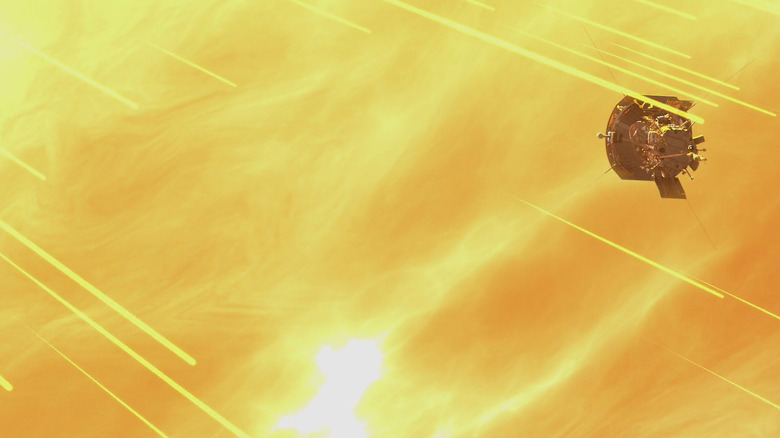NASA's Sun-Visiting Spacecraft Survived Its First Brush With A Star
It's been a busy week for the folks manning the controls of the Sun-touching Parker Solar Probe at NASA. After breaking a bunch of records last week for its distance from the Sun and the speed at which it was traveling, the probe began the week by making the first of its two dozen planned flybys of the star.
Now, after waiting patiently for the probe to complete its pass and gather whatever data it could, NASA is reporting that the probe phoned home to let its engineers know that it's doing just fine. This was the first big test for the probe and its suite of self-managing safety features, and it looks like everything is working as intended.
"Parker Solar Probe was designed to take care of itself and its precious payload during this close approach, with no control from us on Earth — and now we know it succeeded," NASA's Thomas Zurbuchen said in a statement. "Parker is the culmination of six decades of scientific progress. Now, we have realized humanity's first close visit to our star, which will have implications not just here on Earth, but for a deeper understanding of our universe."
NASA knows what kind of intense environment the probe has to deal with as it cruises around the Sun, and it has designed it to be able to withstand incredible temperatures. The spacecraft is equipped with a thick heat shield that protects the instrument-loaded backside of the probe, but it can only do its job if it's pointed in the right direction. To ensure the shield remains at the correct angle, a series of sensors positioned around the edges of the probe automatically keep it in the correct orientation.
For its first pass, NASA says the probe experienced temperatures around 820 degrees Fahrenheit. That might sound insane, but it's nothing compared to the 2,500-degree temperatures it will be faced with when it makes its closest passes of the star over the next half decade or so. Those temperatures are blocked by the heat shield, while the rest of the probe remains in the "mid-80s F," according to NASA.
